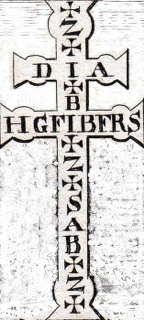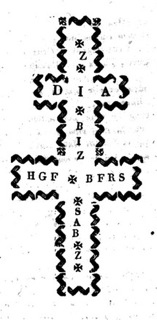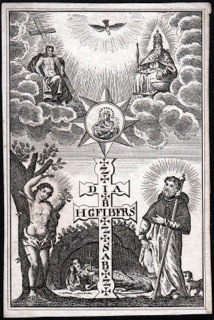“Spiritual” Antidotes against the Plague
In the Middle Ages, the plague wiped out almost one half of the European population. The epidemic broke loose in the Orient, and spread throughout Europe, carried on board ships which from the port of Caffa (Crimea) reached Constantinople (first to be hit by it) and from there sailed to Genova, from which it spread to the center of Italy, and to Messina, from which it crept up the peninsula as far as Rome. But, as it is well-known, the plague hit all of Europe.
Physicians were absolutely inadequate and unprepared to deal with this terrifying disease. At that time, medicine relied on “other kinds of knowledge,” Astrology in particular. In the event of an epidemic, they would recommend:
1. Serenity of spirit
2. Sobriety
3. Healthy foods
4. Distance from contagion
5. To wear wools and minerals
6. To trust the attendant physician
7. Use of uncontaminated objects
8. Prayers, to be well assisted
9. Resignation to the will of God
These remedies were considered to be effective in the case of “invincible” diseases, like the plague, or cholera. Alongside practices which even today we could consider somewhat valid (#3, #4, #6, #7), most advices were of spiritual nature.
In March 1547 the plague was spreading in the town of Trento, seat of the famous Council. The Council Fathers decided to suspend work and to transfer to Bologna. It’s said that they were saved from contagion thanks to a particular exorcism, reciting a short prayer, used since the Middle Ages.

 The formula had been inserted in a particular cross, Cross of Saint Zaccaria, Bishop of Jerusalem (see images of Cross).
The formula had been inserted in a particular cross, Cross of Saint Zaccaria, Bishop of Jerusalem (see images of Cross).
The letters, which were to receive a special blessing, had to be “worn” (through a medal, a small image, a relic) with sincere devotion, in time of plague. According to legend, the Saint himself would have been written them on a sheet of parchment paper, later recovered in the Monastery of Frayles in Spain.
Here are some of the prayer’s invocations (translated from Latin by Gamba). Each invocation begins with one of the letters transcribed on the cross.
Cross of Christ save me
Zeal of your home free me
The Cross wins, the Cross reigns, the Cross governs, through the sign of the Cross save me, Lord, from this plague
God, my God, chase the plague away from me, from this place, and save me
In your hands, Lord, I place my spirit, my heart, and my body
God was before Heaven and Earth and He can therefore save me from this plague
Who wrote this prayer is not known for sure. There are some references to the Sacred Scriptures and to the Psalms, in particular. In part, it is an example of invocation of vernacular nature often found in syncretistic rituals (See Gamba’s “Gli Agathazettel e il rito del fuoco” and “Quando i devoti mangiavano i santini” at www.biagiogamba.it)
But we know for sure that prayers were more efficacious if accompanied by a Saint’s intercession. In this case, there were Protectors against the plague.
 On an interesting engraving dating to the 17th century, three Saints are represented: Saint Sebastian, Saint Rosalia, and Saint Rocco (see image).
On an interesting engraving dating to the 17th century, three Saints are represented: Saint Sebastian, Saint Rosalia, and Saint Rocco (see image).
On the image, around the Cross of Saint Zaccaria, on which are inscribed the “Sacred Letters,” there are the three saints named above, praying to Heaven, where the Virgin appears, and above Her, the Saint Trinity.
Saint Sebastian was considered the most powerful protector against the plague. As we know, he was martyred with several arrows. His wounds, healed by Saint Irene, were compared to the plague’s bubos. Saint Rocco was struck by the plague, from which he recovered thanks to the help of his dog, Reste. Saint Rosalia became part of this cult because she saved the people of Palermo from the 1624 epidemic.
There is one specific reason why prayers directly addressed to God were not considered very effective, and why the intercession of saints was deemed necessary. Physicians could not provide an explanation for the plague. Hence the belief spread that the plague was a sign of God’s anger at the sins of mankind. This explains the presence of the Virgin Mary on the image: who but Mary could move Jesus to compassion and placate God’s anger?
– Biagio Gamba
www.biagiogamba.it
Translated by Mariolina Salvatori
